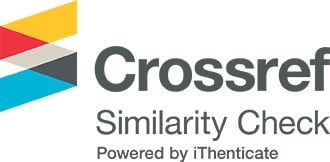Sâu răng sớm ở trẻ nhỏ: Nguyên nhân, chẩn đoán và điều trị
Các tác giả
DOI: https://doi.org/10.59294/HIUJS.31.2024.660Từ khóa:
ECC, sâu răng sớm ở trẻ nhỏ, S-ECC, sâu răng trầm trọng ở trẻ nhỏTóm tắt
Sâu răng sớm ở trẻ nhỏ (ECC) là một vấn đề đáng lo ngại ở cả những nước phát triển và đang phát triển. Sâu răng thường gây đau, nếu không được điều trị kịp thời sẽ dẫn đến nhiễm trùng các cấu trúc liên quan và mất răng sớm, điều này làm ảnh hưởng đến chức năng ăn nhai cũng như gây bất hài hòa trong sự phát triển hàm mặt, thậm chí sâu răng ở mức độ nặng có thể dẫn đến tình trạng kém phát triển thể chất ở trẻ em. Mặc dù ECC có nhiều tác động tiêu cực đến sức khỏe của trẻ em nhưng nó vẫn chưa được quan tâm đúng mức và việc trẻ em được tiếp cận dịch vụ chăm sóc và điều trị răng miệng không đồng đều. Cơ sở hạ tầng y tế đôi khi không thể đáp ứng đầy đủ nhu cầu điều trị cho trẻ em làm cho ECC trở nên một gánh nặng. Do đó, việc phòng ngừa và kiểm soát ECC bằng cách can thiệp vào các yếu tố chính gây sâu răng được xem là một trong những nhiệm vụ quan trọng nhằm đảm bảo sự phát triển lành mạnh cho trẻ.
Abstract
Early childhood caries (ECC) is a problem of concern in both developed and developing countries. Tooth decay often causes pain without treating promptly, it will lead to infection of related structures and tooth loss, which affects chewing function as well as causing disharmony in jaw and facial development. Event severe tooth decay can lead to poor physical development in children. Although ECC has many negative impacts on children's health, it still receives insufficient attention and children's access to dental care and treatment is uneven. Medical infrastructure is sometimes unable to fully meet the treatment needs of children, making ECC a burden. Therefore, preventing and controlling ECC by intervening in the main factors causing tooth decay is considered one of the important tasks to ensure healthy development for children.
Tài liệu tham khảo
[1] NB. Pitts, "Dental caries", Nat Rev Dis Primers, 3,17030, 2017.
DOI: https://doi.org/10.1038/nrdp.2017.30[2] M. Rathee, "Dental caries", StatPearls Publishing LLC, 2024.
[3] SH. Shim, "Association between dental caries and delayed growth in Korean children", Caries Res, 52(1-2), 71-77, 2018.
DOI: https://doi.org/10.1159/000481410[4] AAPD, "Definition of Early Childhood Caries (ECC)," 2008.
[5] C. Feng, "Incidence of early childhood caries: A systematic rewiev and meta-analysis", Journal of Investigative and Clinical Dentistry, 8, 4, 2017.
DOI: https://doi.org/10.1111/jicd.12238[6] A. Bottner, "Streptococcus mutans isolated from children with severe-early childhood caries form higher levels of persisters", Arch Oral Biol, 110, 2020.
DOI: https://doi.org/10.1016/j.archoralbio.2019.104601[7] M. Kishi, "Relationship of quantitative salivary levels of Streptococcus mutans and S. sobrinus in mothers to caries status and colonization of mutans streptococci in plaque in their 2.5‐year‐old children", Community Dent Oral Epidemiol, 37, 241-249, 2009.
DOI: https://doi.org/10.1111/j.1600-0528.2009.00472.x[8] PM. Leong, "A system review of risk factors during first year of life for early childhood caries", International Journal of Paediatric Dentistry, 23(4), 235-250, 2013.
DOI: https://doi.org/10.1111/j.1365-263X.2012.01260.x[9] WM. Avila,"Breast and bottle feeding as risk factors for dental caries: A systematic review and meta-analysis", PLoS One, 10, 11, 2015.
DOI: https://doi.org/10.1371/journal.pone.0142922[10] E. Ercan, "Prevention of maternal bacterial transmission on children's dental-caries‐development: 4‐year results of a pilot study in a rural‐child population", Arch Oral Biol, 52, 748-752, 2007.
DOI: https://doi.org/10.1016/j.archoralbio.2007.01.007[11] L. Paglia, "Familial and dietary risk factors in early childhood caries", European Journal of Paediatric Dentistry, 17(2), 93-99, 2016.
[12] H. Çolak, "Early childhood caries update: A review of causes, diagnoses, and treatments," Journal of Natural Science, Biology and Medicine, 4, 1, 2013.
DOI: https://doi.org/10.4103/0976-9668.107257[13] JM. Doughlass, "Integrating oral health in to overall health care to prevent early childhood caries: Need, evidence, and solutions", Pediatric Dentistry, 37(3), 266-274, 2015.
[14] H. Mohammed, "Early childhood caries: parents' knowledge, attitude and practice towards its prevention in refugee camps in Erbil, Iraq", BMC Oral Health, 23, 2023.
DOI: https://doi.org/10.1186/s12903-023-03516-8[15] S. Twetman, "Caries prevention with fluoride toothpaste in children: An update", European Archives of Paediatric Dentistry, 10(3), 162-167, 2009.
DOI: https://doi.org/10.1007/BF03262678[16] DM. Carvalho, "Fluoride varnishes and decrease in caries incidence in preschool children: A systematic review", A Revista Brasileira de Epidemiologia, 13(1), 139-149, 2010.
Tải xuống
Tải xuống: 391











